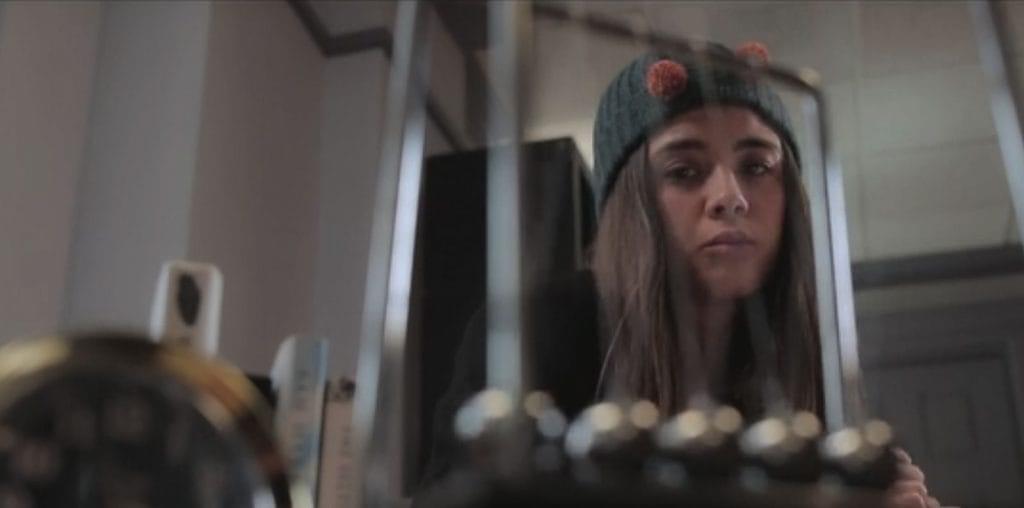
A beloved historical epic about ancient China could not be a better subject matter for the first film that John Woo has produced in his homeland since 1993. Based on the Chinese historical text “Chronicle of the Three Kingdoms” and the famous novel chronicling the same era (“Romance of the Three Kingdoms”), Woo’s new film is a loud, colorful, and violent epic about the effects of friendship – and the weather – on war.
It is 208 a.d. Warlord Cao Cao (Fengyi Zhang) has declared himself “Prime Minister” of the northern lands and has the emperor of China eating out of his hand. In spite of his arrogance and his lust for power, Cao Cao seems to have a noble goal: rooting out the rebel factions in the South and West, so as to unite China under one emperor. We soon meet Liu Bei (Yong You) and Sun Quan (Chen Chang), leaders of these southern and western lands. As it turns out, Sun Quan is a man who values culture and encourages literacy, music, and peace in his subjects. For his own part, Liu Bei is a man of his people who values the life of every single peasant in his lands. Liu Bei sends his chief strategist, Zhuge Liang (Takeshi Kaneshiro), as an envoy to Sun Quan to suggest an alliance. Peaceful (or cowardly?) Sun Quan reluctantly agrees. The South and the West join forces, and that’s all we really need to know: the next two-plus hours contain little more than a whole lot of a*s-kicking.
There are three major battle sequences, which are rather predictable in their outcome: Liu Bei and Sun Quan surprise Cao Cao by winning the first round, Cao Cao gets his revenge in the second melee, and the good guys win the final fight. The first two fracases are shot and edited in a fantastic way. Woo manages to keep things tense and exciting while also avoiding the trap that almost all contemporary action directors have fallen into: his fights are cut just slowly enough and clearly enough that one can actually perceive what is happening, one can follow the battle and appreciate the sheer bad-assery of some of the primary warrior characters. This is such a rarity these days, when action scenes, as a rule, are just chaos, cut so fast and so confusingly that one really has no sense of what is actually happening. It has been a long time since such massive skirmishes have been filmed with this sort of lucidity, and yet without sacrificing a whole lot of in-your-face coolness. The third brawl does get a bit harder to follow, and can be numbing in its length, volume, and sheer intensity, but the eye candy is undeniable. The action can border on cartoonish as well, as generals wade into battle and single-handedly slaughter legions of enemies. But this film is meant to be entertaining, and it is. The super-heroics of the key players paint them as larger-than-life figures, and this is exactly how these people have been portrayed in Chinese history for eighteen hundred years.
The clarity with which these military campaigns were lensed is doubly important because this movie places a lot of emphasis on tactics. We see both sides plotting against each other, making plans, out-thinking each other, counter-out-thinking each other, and launching secret schemes. Zhuge Liang, the strategist, has his work cut out for him, and he does it well. For all of the film’s major clashes, perhaps the plotting sessions taking place between them (which is also where the character development generally happens) might be more compelling. It isn’t accurate to call this film an intellectual exercise, but Zhuge Liang and some of his cohorts are clearly meant to be intelligent people. Their careful thinking through of the coming combat is a key aspect of the film, and a gripping one. And who knew the weather could be so crucial?
Every character in this movie fills the screen with their presence. As is the case whenever Kurosawa’s seven samurai share the frame together, Red Cliff has so many wonderfully huge personalities on screen that they threaten to crowd each other out of frame. That said, a few of these giants don’t quite get the character development they deserve. A slightly smaller principal cast might have alleviated some confusion and allowed the remaining characters to breathe and to develop. Being an action flick, this large cast is almost all men, but the two prominently featured women both steal every scene they’re in. These women are amazing: gorgeous, smart, brave, and full of just as many key strategic plots as the fellas. One of them is feisty and the other demure, but neither is to be trifled with. Of course with two dames in the midst of this man’s world, you know there are going to be love stories shoehorned in, and there are; one of them pays off subtly, deliciously, and unexpectedly. Let’s just say that the tea leaf is mightier than the sword.
Like the female leads, the photography is beautiful in this film. The huge impossible vistas, the attack ships on fire, and the gigantic armies on the march must be digital effects, but they are rendered spectacularly, and mostly seamlessly (save for the film’s very last shot!). However the more intimate scenes taking place within interiors have been photographed just as pleasingly, by Yue Lü and Li Zhang.
“Red Cliff,” however, is not without pitfalls. A bit of sentimentality can rear up now and then, and there might be a few glaring historical inaccuracies: for example, in reality no one knew how diseases propagated for more than a millennium after “Red Cliff’s” time period, but somehow our heroes have some pretty solid education on how typhoid is spread. Too bad they forgot this stuff: a few European plagues could have been prevented in the coming centuries.
The biggest problem I had with the film is that although Liu Bei and Sun Quan are clearly meant to be the forces of good here, we never actually see Cao Cao doing anything especially evil. I found it really hard to hate the guy. He isn’t exactly a kindly old uncle type, but he’s no Hitler, either. This is a man who might be a bit too ambitious, and maybe doesn’t quite have the common people’s best interests in mind, but seriously, he doesn’t torture anyone, he doesn’t abuse his men, he never plunders, rapes, or pillages. The violence he commits isn’t gratuitous. Certainly it is nice to see a villain in a film this big who has been painted in more subtle strokes. The fact that Cao Cao isn’t a cackling, moustache-twirling sadist is great, but the guy just doesn’t come across as someone we need to hate. This diminishes the overall impact of the film; if this guy isn’t all that bad, then why is everyone fighting him with such vigor? Because of this, for all of the beautiful vistas, well-crafted battles, confident performances, and interesting scheming in “Red Cliff,” there doesn’t seem to be much of a sense of urgency. Why should we care who wins or loses if the bad guy isn’t so bad? Maybe uniting China is a good idea…and after all, that is how things ended up shaking out in the coming centuries (in real life), so do Liu Bei and Sun Quan really win in the end?
Note: The U.S. and European version of the film, which screened at the Chicago International Film Festival and is reviewed here, is a truncated amalgamation of the original Chinese release, which was spread over two films. It works for me as a concise single film, though I am curious to see if the longer version contains more character development.

